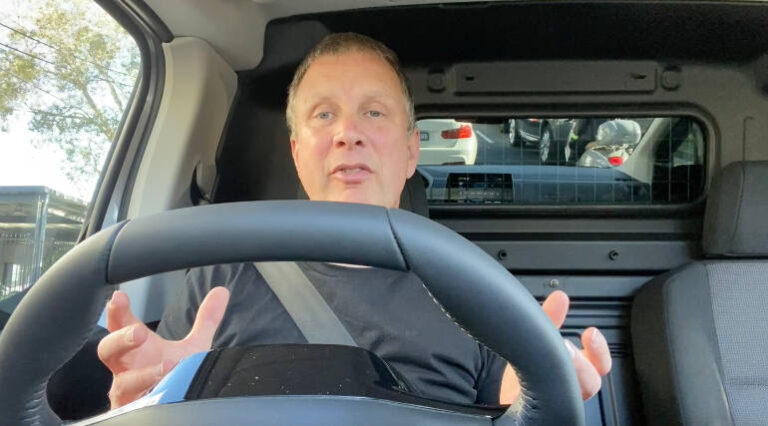I was excited about the opportunity to drive the electric e-Partner small van from Peugeot. It wasn’t the type of excitement you’d feel from an invite to Italy for a Ferrari drive day (still waiting for this one to arrive in the mail). But as a fleet nerd, taking the electric vehicle discussion beyond instant acceleration and gimmicky interior designs, to a more practical application, did warm my heart.
The e-Partner is a working van so there’s no exterior hints towards its electric power train at first glance. The badging is subtle and the grille (which normally indicates that a car is electric) looks identical to the petrol version.
Peugeot have launched the e-Partner with a 50 kW/h battery which provides a WLTP of 258km. There were some questions at the launch about bigger batteries and longer range from my media colleagues who obviously didn’t understand how a fleet buyer would use this vehicle.
But the Peugeot executives did. They knew that 250km is more than enough for a delivery vehicle of this size and the 50 kW/h battery was the perfect capacity for quick recharges during a lunch break using a DC charger. They also understood that buyers for this vehicle were small fleets that would probably charge overnight using 7 kW or 22 kW chargers.
The price point was also significant. To get the list price of an electric van under $60k, Peugeot has sacrificed some of the cool and quirky features found in the Pro petrol version.
When you slide into the driver’s seat, you use an old fashion key to start the vehicle. No fancy push button starts in this work horse. The dash and instruments are slightly different to the petrol Pro model we reviewed earlier this year which is great when introducing staff to electric vehicles because anything to futuristic might create some resistance.
A noticeable difference from the Pro petrol version we reviewed is the middle seat. The e-Partner only comes with two seats so it looses one of the best features which was the table when you folded the middle seat down.
The payload also reduces with the e-Partner from 1,000kg to 750kg though the interior space doesn’t change (3.9 cubic metres) because the battery is housed under the floor. It’s built on Peugeot’s EMP-2 modular multi-energy-platform which allows for a range of different powertrains.
During the launch I drove on a loop around Sydney for just under two hours. It took me via the CBD, along some major roads choked with stop/start traffic, in the WestConnex tunnel, and ended with a rat run through some tight suburban streets. At the end I felt refreshed. No noise; no vibrations; and a comfortable driver’s seat.
One of the first things I noticed with the e-Partner, and other vans in the Peugeot range, is the storage in the cabin. When the vehicle is your office you need space to hide things, and store your everyday items.
Unfortunately the thing I didn’t like was the lack of charging outlets. There’s only one 12v outlet and one USB slot which would limit the number of devices you can charge while on the road. I would like to see more charge outlets in future models.
Something that was missing from the list of safety features was Blind Spot Monitoring. It’s almost standard in new passenger cars and SUVs so I missed it when driving a van with lots of blind spots. As a regular van driver upgrading to the Peugeot e-Partner I probably wouldn’t notice. But the risk for fleets is when employees transition from their private vehicles packed with active and safety features, to their work vans with less driving aids.
While the price is sharp for the e-Partner, the gap between petrol and electric is still too big. We did a quick WOLC calculation assuming we travelled 150,000km over five years and achieved parity once we assumed 100% solar charging with no cost.
The good news for all manufacturers currently selling electric vehicles is, WOLC doesn’t influence all fleet purchase decisions. There are many other reasons to purchase an EV which will ensure sales continue to grow, and the e-Partner is a great zero emission option if your business needs to carry a load.
Click here to see the pricing and specifications of the Peugeot e-Partner.






